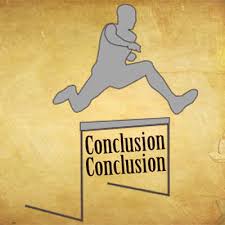
A boss has the title. A leader has the people. – Simon Sinek
Writing in The Book of Business Anecdotes, Peter Hay recounts the following story:
In the 1950s, marketing whiz Stanley Arnold was working at Young & Rubicam, where he was asked to come up with a marketing campaign for Remington Rand. The company was among the most conservative in America. Its chairman at the time was retired, General Douglas MacArthur. Intimidated at first by a company that was so much a part of America, Arnold also found in that phrase the first inspiration for a campaign. After thinking about it, he went to the New York offices of Merrill Lynch, Pierce, Fenner, and Beane, and placed the ultimate odd-lot order:
“I want to purchase,” he told the broker, “one share of every single stock listed on the New York Stock Exchange.” After a vice president tried to talk him out of it, the order was finally placed. It came to more than $42,000 for one share in each of the 1098 companies listed on the Big Board at the time. Arnold now took his diversified portfolio into a meeting of Remington Rand’s board of directors, where he argued passionately for a sweepstakes campaign with the top prize called A Share in America. The conservative old gentlemen shifted around in their seats and discussed the idea for a while. “But Mr. Arnold,” said one, “we are not in the securities business.” Said another, “We are in the shaver business.”
“I agree that you are not in the securities business,” said Arnold, “but I think you also ought to realize that you are not in the shaver business either. You are in the people business.” The company bought the idea.
People business. It’s one of the most complex challenges you will face in leadership. And it’s one you’ve got to conquer if you are going to succeed. Unfortunately, you don’t always get to choose those people. In fact, you might at times feel like the person who said, “Sometimes I wish I was an octopus so I can slap eight people at once”.
Since slapping people is out of the equation as a leader, we must reconcile the fact that as leaders we are in the people business. This is our greatest challenge and it’s our greatest reward. Here are a few reminders on how as a leader you can win with people.
You win by winning their hearts
Too often this is where many a leader drops the ball. This is a leadership principle I learned from John Maxwell almost twenty years ago. Maxwell said, “Always touch a person’s heart before you ask him for a hand.”
A good leader will invest relationally with his or her people before asking for their hand. It’s when you’ve made this connection first you open the door to other possibilities and opportunities. But first, win their heart.
You win by investing in your people
When your people know that you are invested in them they will go to great lengths to perform. This investment is not just monetary although it’s included. Winning with your people happens as you empower and equip them to not only meet their expectations but to exceed them.
“Whatever we expect with confidence,” said Brian Tracy, “becomes our self-fulfilling prophecy”. You win with your people when you raise their level of confidence and remind them of their potential and abilities on a regular basis.
You win with people by conceding the spotlight
I’ve said it many times and it’s worth repeating here now. Expressions of servant leadership are found when you concede being in the spotlight by putting someone else in it. And this is how you win with people.
Billy Hornsby said, “It’s okay to let those you lead outshine you, for if they shine brightly enough, they reflect positively on you”. You can only win with people as a leader on this level if you’re secure enough to drop your ego and quit worrying about who gets the credit for what. You win with people when you celebrate your people and their successes.
You win with people when you listen to your people
You win with your people when you learn how to listen. Some of the best ideas in any organization will not flow out of the corner offices, but into them. As a leader you must do as Howard Behar suggests in his book. It’s Not About The Coffee, and “put the time into listening, even to what’s not said…You’ll know what your customers want, you’ll know why the passion is missing from your organization, and you’ll learn solutions to problems that have been sitting there waiting to be picked.”
Winning with people happens when you are more concerned with what they have to say than you are in what you have to say. Your leadership hinges at times on your ability to be quiet and listen.
You win with people when you commit to developing leaders
Your success as a leader doesn’t come when you gain more followers but when you develop more leaders. Simply put, multiplication is the math of leadership. You win with your people by multiplying the number of leaders in your organization.
“A leader is best when people barely know he exists,” said Lao Tzu, “when his work is done, his aim fulfilled, they will say: we did it ourselves”. And this is the ultimate goal of your leadership and the definitive mark of winning with your people. It’s as you raise them up as leaders and empower them that you win.
Your leadership rises and falls on your ability to win with people. Make it a priority and you will go far.
©2017 Doug Dickerson








